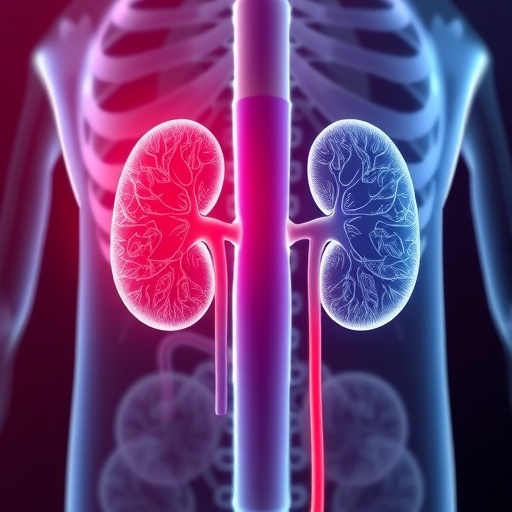Credit: Vivian Abagiu
Researchers from The University of Texas at Austin have found that honeybees treated with a common antibiotic were half as likely to survive the week after treatment compared with a group of untreated bees, a finding that may have health implications for bees and people alike.
The scientists found the antibiotics cleared out beneficial gut bacteria in the bees, making way for a harmful pathogen, which also occurs in humans, to get a foothold. The research is the latest discovery to indicate overuse of antibiotics can sometimes make living things, including people, sicker.
The UT Austin team, led by professor Nancy Moran and postdoctoral researcher Kasie Raymann, found that after treatment with the common antibiotic tetracycline, the bees had dramatically fewer naturally occurring gut microbes — meaning healthy bacteria that can help to block pathogens, break down toxins, promote absorption of nutrients from food and more. They also found elevated levels of Serratia, a pathogenic bacterium that afflicts humans and other animals, in the bees treated with antibiotics, suggesting that the increased mortality might have been a result of losing the gut microbes that provide a natural defense against the dangerous bacteria.
The discovery has relevance for beekeepers and the agriculture industry. A decade ago, U.S. beekeepers began finding their hives decimated by what became known as colony collapse disorder. Millions of bees mysteriously disappeared, leaving farms with fewer pollinators for crops. Explanations for the phenomenon have included exposure to pesticides, habitat loss and bacterial infections, but the scientists now say antibiotics given to bees could also play a role.
"Our study suggests that perturbing the gut microbiome of honeybees is a factor, perhaps one of many, that could make them more susceptible to declining and to the colony collapsing," Moran said. "Antibiotics may have been an underappreciated factor in colony collapse."
The results are reported today in the online journal PLOS Biology.
Bees are a useful model for the human gut microbiome for several reasons. First, bees and humans both have a natural community of microbes in their guts, called a gut microbiome, which aids a number of functions including modulating behavior, development and immunity. Second, both have specialized gut bacteria — ones that live only in the host gut — that are passed from individual to individual during social interactions.
According to this study, overuse of antibiotics might increase the likelihood of infections from pathogens.
"We aren't suggesting people stop using antibiotics," Moran said. "Antibiotics save lives. We definitely need them. We just need to be careful how we use them."
In large-scale U.S. agriculture, beekeepers typically apply antibiotics to their hives several times a year. The strategy aims to prevent bacterial infections that can lead to a widespread and destructive disease that afflicts bee larvae.
"It's useful for beekeepers to use antibiotics to protect their hives from foulbrood," said Raymann, referring to the disease. "But this work suggests that they should also consider how much and how often they're treating hives."
To conduct the study, researchers removed hundreds of bees from long-established hives on the rooftop of a university building and brought them into a lab where some were fed a sweet syrup with antibiotics and some were fed syrup only. The researchers painted small colored dots on the bees' backs to indicate which had received antibiotics and which had not. After five days of daily treatment, the bees were returned to their hives. In subsequent days, the researchers collected the treated and untreated bees to count how many were still living and to sample their gut microbes.
About two-thirds of the untreated bees were still present three days after reintroduction to the hive, while only about a third of the antibiotic-treated bees were still present.
Adding further weight to the hypothesis that antibiotic-treated bees suffered a higher mortality due to a lower resistance to the pathogenic bacteria Serratia, the researchers conducted a follow-on experiment in which they exposed antibiotic-treated bees to Serratia and observed a much higher mortality than untreated bees.
"This was just in bees, but possibly it's doing the same thing to you when you take antibiotics," Raymann said. "I think we need to be more careful about how we use antibiotics."
###
In addition to Raymann and Moran, the study's other co-author is Zack Shaffer, an undergraduate biochemistry student.
Funding for this research was provided by the National Institutes of Health and the U.S. Department of Agriculture's National Institute of Food and Agriculture.
Media Contact
Marc Airhart
[email protected]
512-232-1066
@UTAustin
http://www.utexas.edu
############
Story Source: Materials provided by Scienmag




